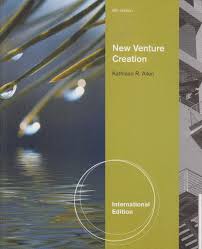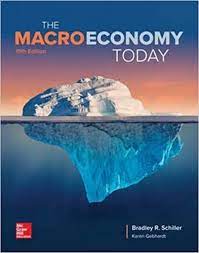Description
Test Bank For New Venture Creation International Edition 6th Edition by Kathleen R. Allen
Chapter 3—Creativity and Opportunity
TRUE/FALSE
1.Creativity enables entrepreneurs to differentiate their businesses from competitors so that customers will notice them.
ANS: T PTS: 1
2.Stage seven of Norman Seeff’s creative process represents the emotional fulfillment of the original dream.
ANS: T PTS: 1
3.Common types of roadblocks to creativity are personal, relational, and environmental.
ANS: F PTS: 1
4.The illumination step in Wallas’s creative process brings the idea to an outcome.
ANS: F PTS: 1
5.Discovery theory and creation theory help explain how entrepreneurial opportunities happen.
ANS: T PTS: 1
6.Entrepreneurs erect roadblocks that prevent them from being creative.
ANS: T PTS: 1
7.The environment in which a person works can either stimulate or discourage creativity.
ANS: T PTS: 1
8.The creative journey begins with maintaining a journal of one’s thoughts and ideas.
ANS: T PTS: 1
9.Entrepreneurs build businesses based on concepts that never existed before.
ANS: F PTS: 1
10.One of the most effective ways that entrepreneurs have of finding opportunity is to see a problem and seek a solution.
ANS: T PTS: 1
MULTIPLE CHOICE
1.Entrepreneurs differ from others who have ideas in that they know how to extract ____ from those ideas to creative commercial potential.
a.
value
b.
creativity
c.
innovation
d.
opportunities
e.
problems
ANS: A PTS: 1
2.____ sees opportunity arising from shifts in external factors in the market or industry, such as regulation, technological changes, and changes in customer preferences.
a.
Problem solving
b.
Innovation
c.
Creation theory
d.
Discovery theory
e.
Value creation
ANS: D PTS: 1
3.In ____, entrepreneurs create opportunities via their actions, reactions, and experiments around new products, services, and business models.
a.
invention
b.
innovation
c.
creation theory
d.
discovery theory
e.
value creation
ANS: C PTS: 1
4.Creativity is the basis for ____, which is discovering something that did not exist previously.
a.
invention
b.
innovation
c.
creation theory
d.
discovery theory
e.
value creation
ANS: A PTS: 1
5.____ is finding a new way to do something or improving on an existing product or service.
a.
Invention
b.
Innovation
c.
Creation theory
d.
Discovery theory
e.
Value creation
ANS: B PTS: 1
6.Noller developed a formula that suggests that creativity is a function of three dynamics: knowledge, imagination, and ____.
a.
invention
b.
association
c.
problem solving
d.
discovery
e.
evaluation
ANS: E PTS: 1
7.Which of the following is not one of the four stages of the creative process identified by Wallas?
a.
Preparation
b.
Association
c.
Incubation
d.
Illumination
e.
Verification
ANS: B PTS: 1
8.No time for creativity, lack of confidence, and absence of creative skills are all examples of ____ roadblocks.
a.
creativity
b.
invention
c.
innovation
d.
business opportunity
e.
functional
ANS: A PTS: 1
9.Creativity is the behavior that results in ____.
a.
manipulation
b.
innovation
c.
intuition
d.
illumination
e.
problem solving
ANS: B PTS: 1
10.____ on a regular basis trains the mind to shift quickly into the creative mode.
a.
Brainstorming
b.
Minimizing distractions
c.
Contemplation
d.
Changing networks
e.
None of these choices
ANS: C PTS: 1
11.According to Rosabeth Moss Kanter, accountability, collaboration, and initiative are all elements of ____.
a.
innovation
b.
confidence
c.
creativity
d.
intuition
e.
invention
ANS: B PTS: 1
12.Reducing some of the risk of entrepreneurship and building confidence can be achieved by ____.
a.
devoting time each day to quiet contemplation
b.
identifying a problem and solving it
c.
conducting a feasibility analysis
d.
becoming more observant
e.
using a personal network
ANS: C PTS: 1
13.Closing the door, shutting off the phone, and turning off email to prepare to do some creative thinking are all examples of how you can ____.
a.
effectively solve problems
b.
minimize distractions
c.
develop a creative culture
d.
design physical settings that inspire people to be creative
e.
All of these choices
ANS: B PTS: 1
14.____ is one of the most successful new product idea companies in the world.
a.
IBM
b.
Apple
c.
Microsoft
d.
IDEO
e.
OSHA
ANS: D PTS: 1
15.Most business ideas stem from a/an ____ that an entrepreneur sees in his or her immediate environment.
a.
problem
b.
solution
c.
journal
d.
innovation
e.
community
ANS: A PTS: 1





Be the first to review “Test Bank For New Venture Creation International Edition 6th Edition by Kathleen R. Allen”